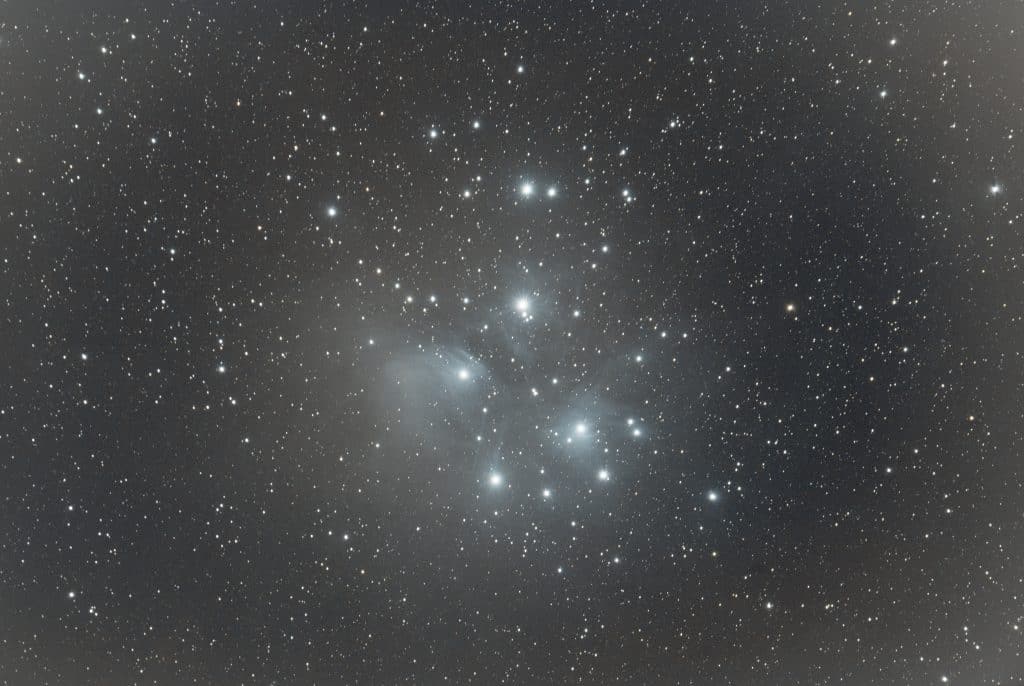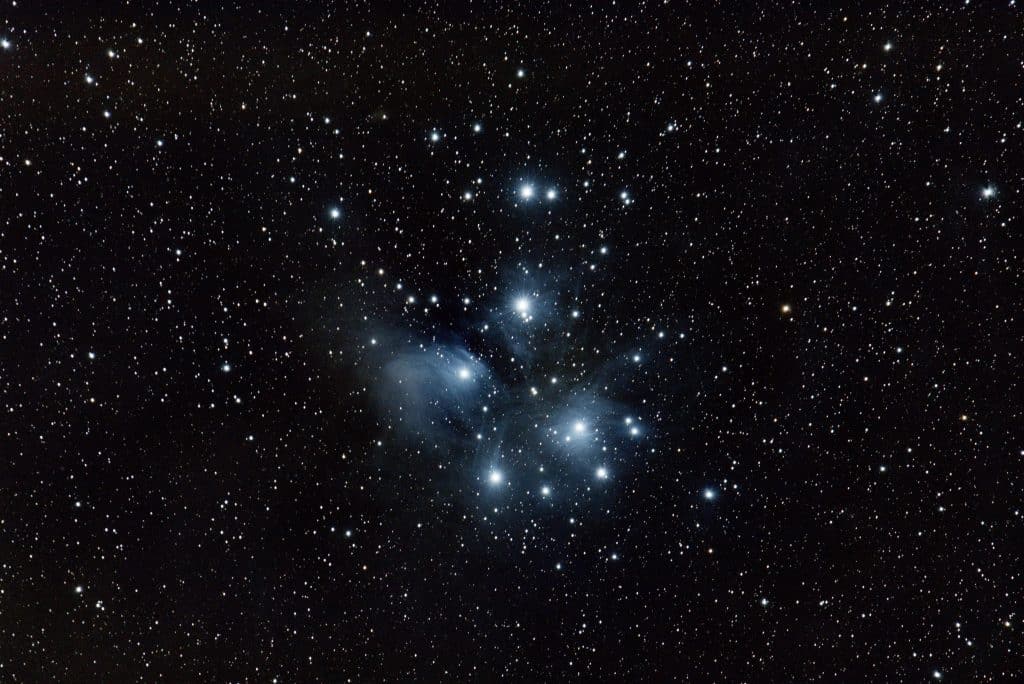This time around the image has more integration time and better tracking, resulting in a clearer image. That night I decided to point my lens at M45 again. However, I had to cut the night short so I did not have time to obtain calibration frames, to properly calibrate the image. Hence I did 60-second observation subs on the target at 600 mm. I did stacking in a trial version of Pixinsight. Missing the calibration frames resulted in a funny-looking vignetting as seen in the image below.

From the above image, the beautiful reflection nebula has more detail than the image I posted previously. Hence I went out and recorded a set of calibration files. I recorded a total of 90 bias frames, 20 dark frames with (30-second exposure, 60-second exposure, and 120-second exposure) and 20 flat frames. Introducing the calibration frames into the stack resulted in removing the funny-looking vignetting. Adjusting the background resulted in the image below. In this image you see the very beautiful reflection nebula of the target M45.

M45 – Facts
The Pleiades also known as the seven sisters is an open star cluster with middle-aged, hot B-type stars. The cluster is located in the northwestern part of the constellation of Taurus. The distance to M45 is approximately 444 lightyears from the Solar system, making this cluster one of the nearest star clusters.
The apparent magnitude of M45 is 1.6 in the V-band.



